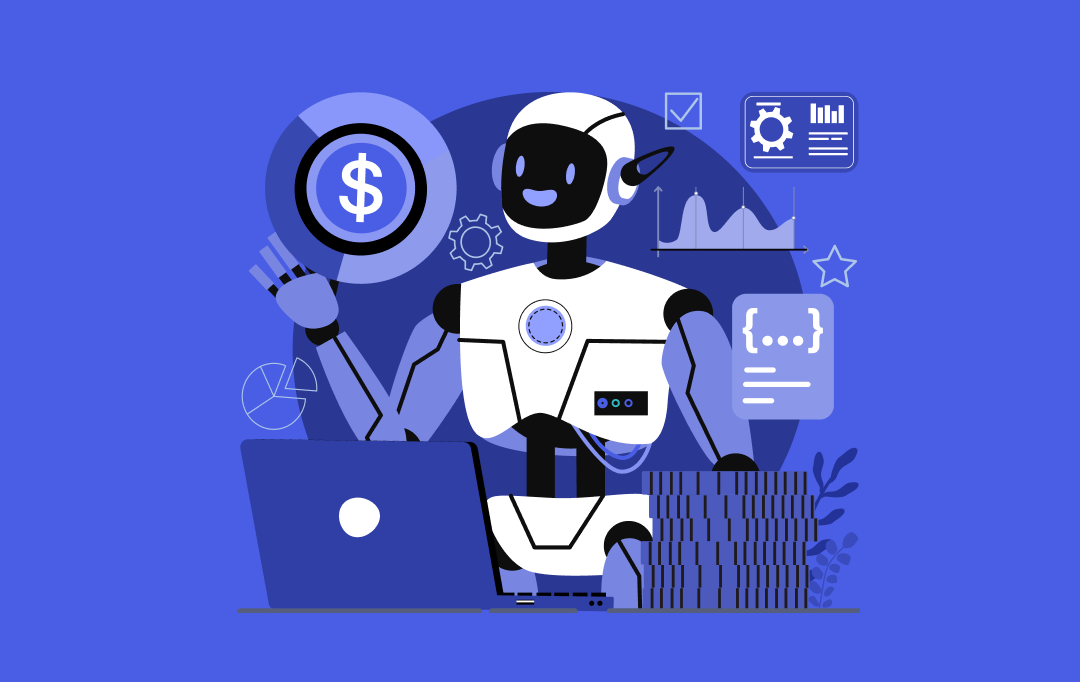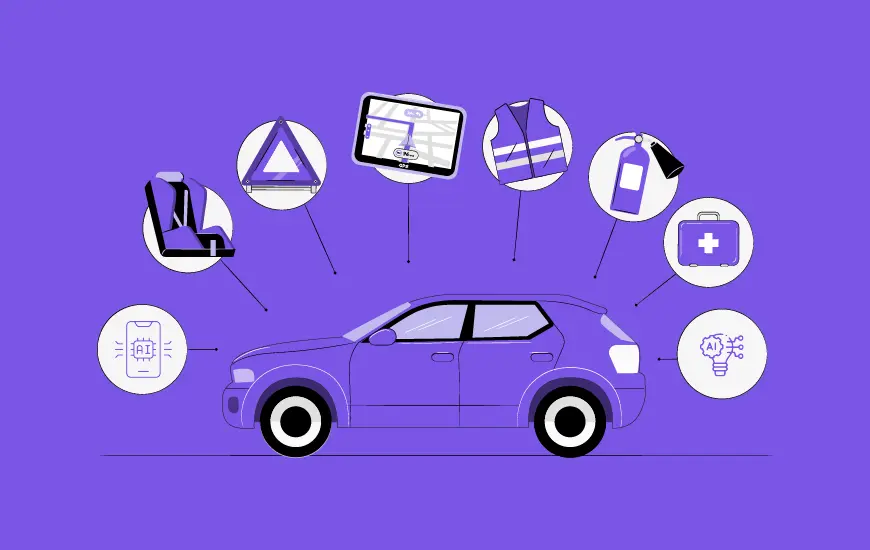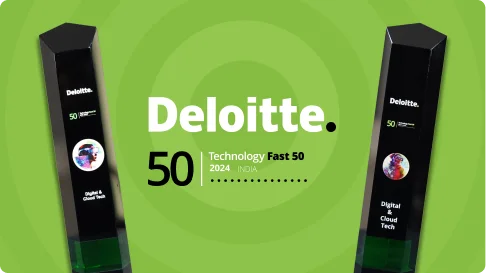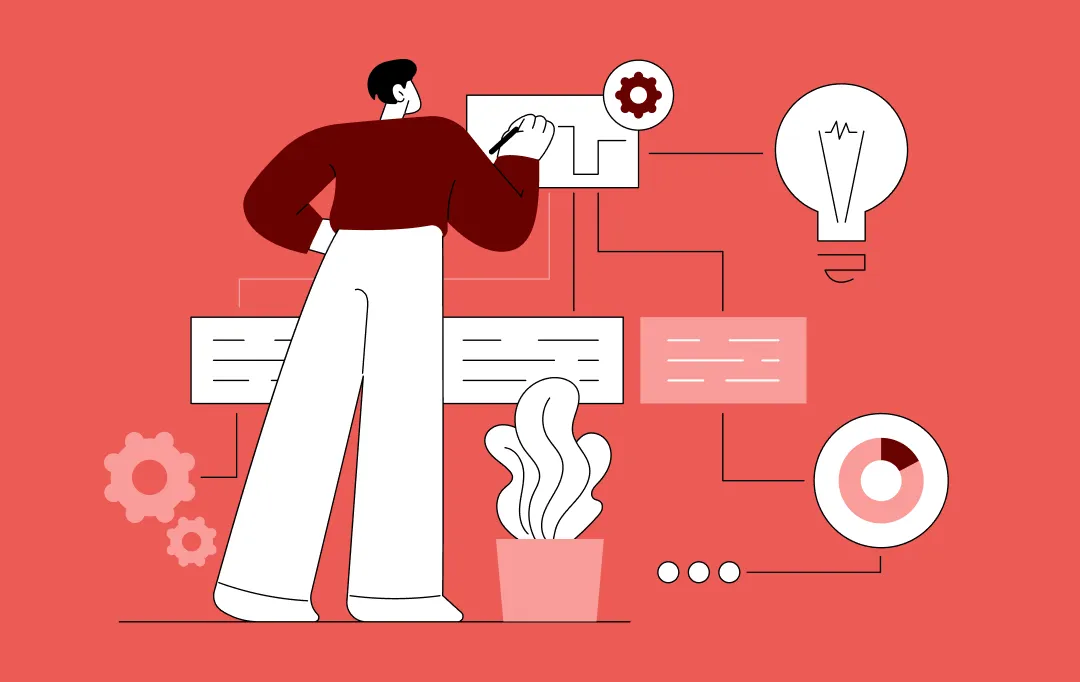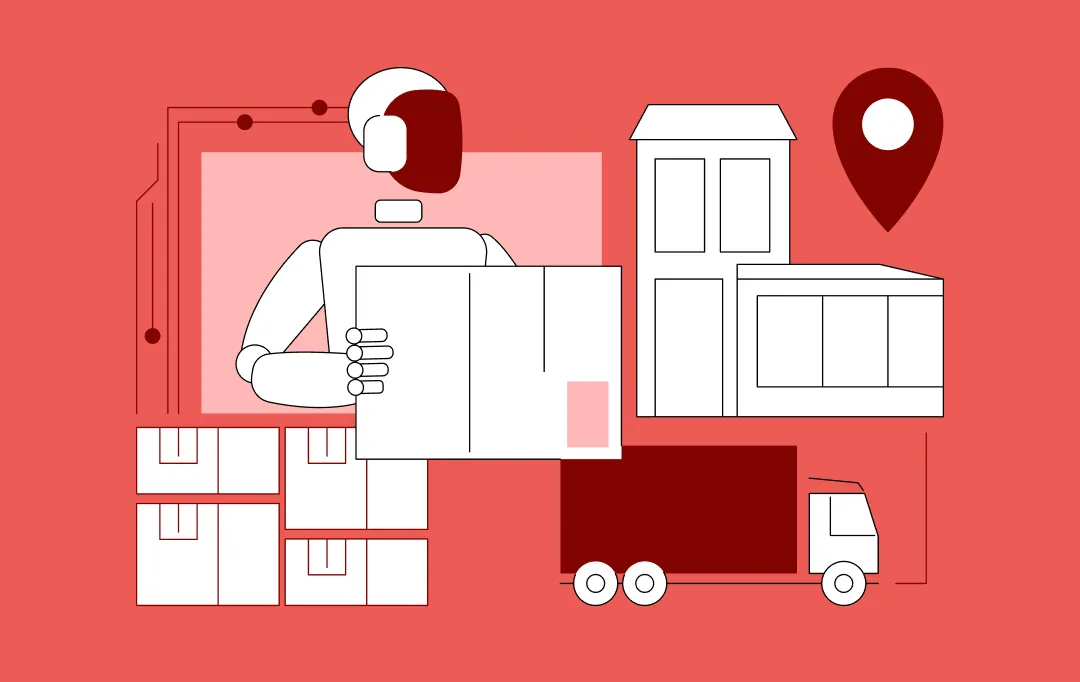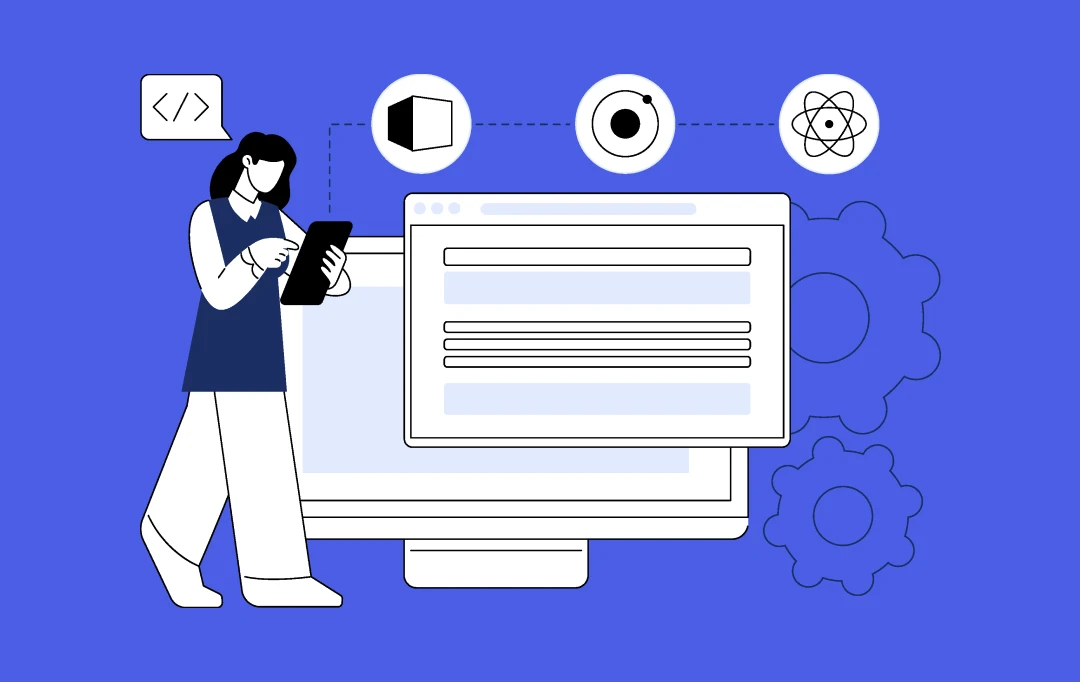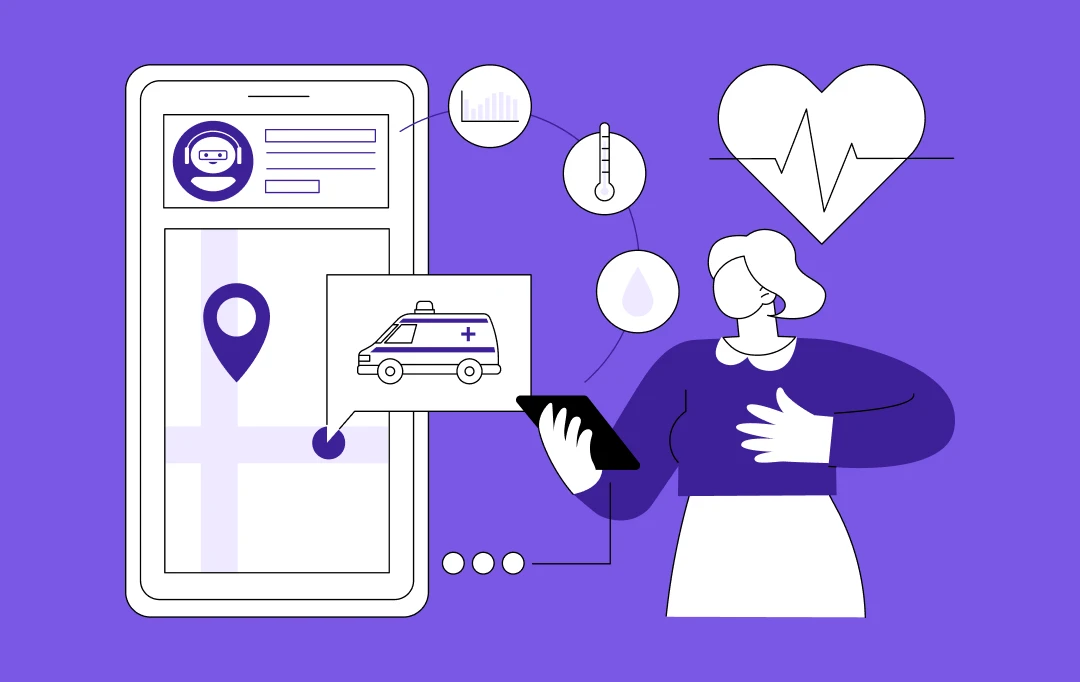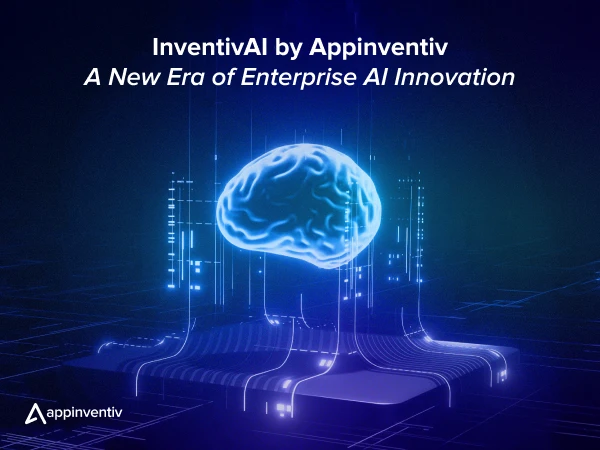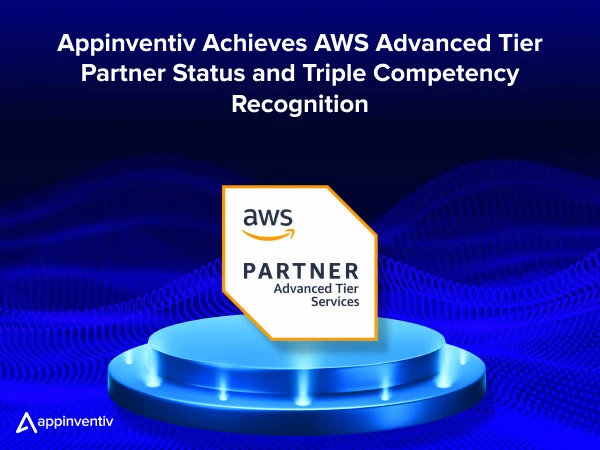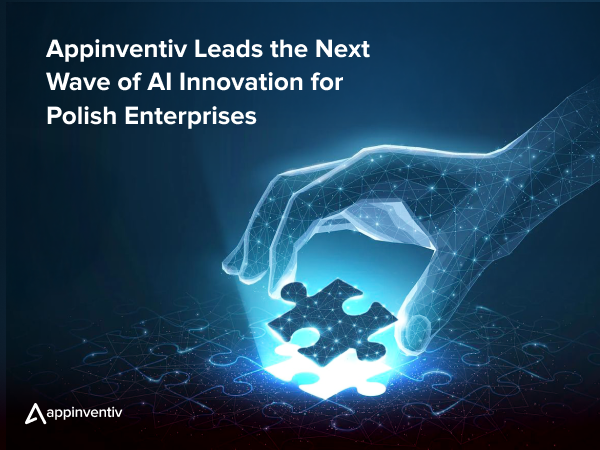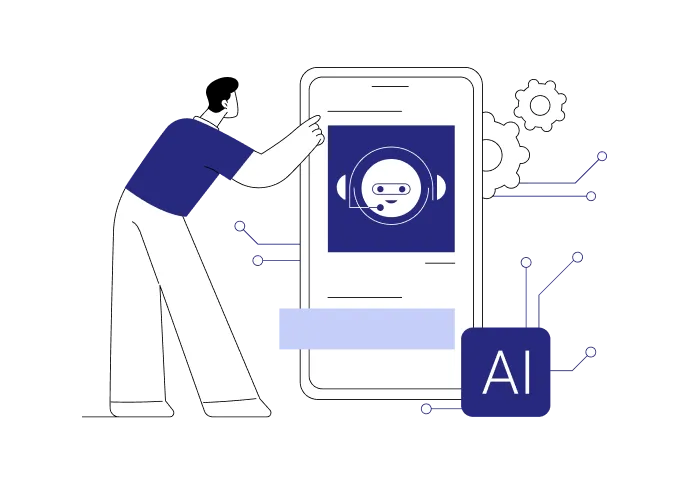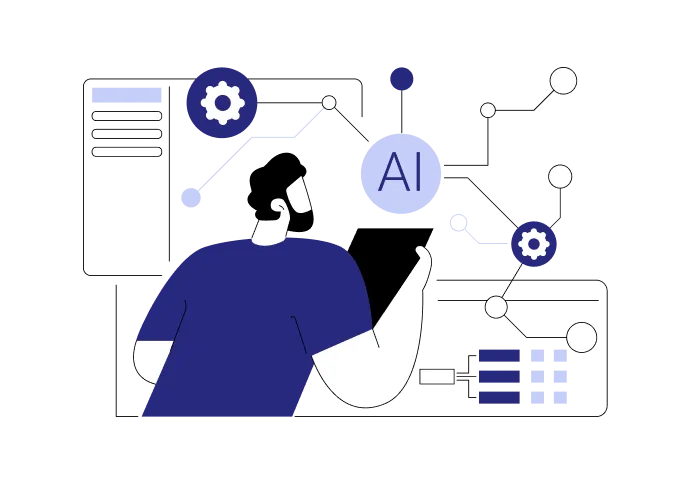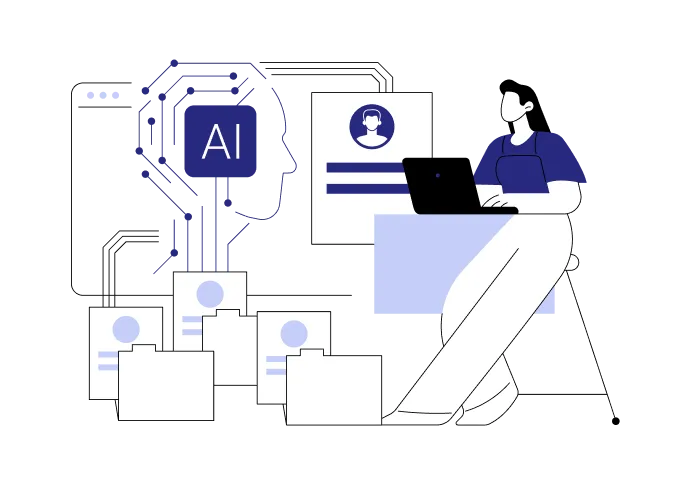- Why Should You Invest in AI?
- A Comprehensive View of the Costs Involved in Developing an AI App
- Breakdown of Costs by Levels of Complexity
- Cost Breakdown by Stages
- Estimating the Overall Costs
- Time and Effort Estimates
- Factors Affecting the AI Development Cost
- Complexity of Design
- Backend Development Complexity
- Third-Party Integrations
- Security Measures
- Compliance Measures
- Platform Selection
- Technologies Used
- Complexity of Features
- What’s Really Behind AI App Development Costs
- App Maintenance
- App Hosting
- App Promotion and Marketing
- Legal and Licensing Fees
- Other Operational Costs
- Ways to Optimize AI App Development Costs
- Developing an MVP
- Setting Priorities of Features Necessary
- Capitalizing on Cross-Platform Development
- Outsourcing to Cost-Effective Regions
- Understanding the Artificial Intelligence Development Process: Key Stages
- Monetization Strategies for Your AI App
- Subscription-Based Model
- Freemium Model
- Pay-Per-Use / Transactions Model
- Licensing Model
- Advertising Model
- Build Intelligent, User-Friendly AI Apps Effortlessly With Appinventiv
- FAQs
Key takeaways:
- AI development costs range from $50,000 to $500,000+, depending on complexity and features.
- Major cost drivers include project scope, data quality, technology stack, and integration needs.
- Ongoing expenses such as maintenance, cloud hosting, and updates are essential to budget for.
- Starting with an MVP and clear priorities can help control costs and maximize ROI.
Investing in AI is becoming increasingly essential for businesses aiming to stay competitive. In the business world, organizations are trying to find ways of automating their activities, extracting actionable information from data, and improving decision-making processes. The early adopters of AI are already experiencing tangible benefits in efficiency, customer satisfaction, and innovation, whereas the laggards risk being overtaken by a rapidly changing market.
In its 2025 survey, McKinsey reported that 78% of organizations currently have AI deployed in at least one business area, up from 72% in early 2024. This increased application highlights the critical need to understand the financial considerations of AI development.
The cost of developing an AI application ranges from $50,000 to $500,000, where the difference depends on several variables, including the complexity of the AI model, the quality and quantity of the data, the platform’s scalability, and the level of expertise.
For example, creating a simple AI application falls at the lower end of the spectrum, whereas sophisticated solutions with deep learning or natural language processing can incur higher costs. Also, recurring costs such as cloud services, data storage, and model maintenance may be included in the overall investment.
Keep on reading as we explore and break down the cost development of the AI in a detailed manner to give you a clear picture of the breakdown of your investment and how to maximize it.
Join the 78% of organizations already driving growth through intelligent automation
Why Should You Invest in AI?
AI investment has shifted from being an experimental venture to a business necessity. The technology that was previously viewed as an emerging one is now the central source of operational excellence and competitive advantage. According to McKinsey, AI use cases will unlock annual economic value between 2.6 and 4.4 trillion, with the potential to impact over 63 core business processes across industries if fully scaled. AI is transforming the way organizations create, deliver, and maintain value in areas like customer service and marketing, logistics, and R&D.
Businesses that are embracing AI-based strategies at an early stage, specifically in strategic functions and not in solitary operations, are realizing quantifiable advantages in productivity, creativity, and agility in the market. The change has been further substantiated by Google’s recent performance. Having developed AI capabilities across Search, Cloud, and Workspace, Google has reported substantial growth in revenue and user consumption, which directly correlates with its AI investments.
These findings highlight an important fact: the value of AI is not created through experimentation, but rather through a full-scale implementation in accordance with the explicit business objectives.
The conclusion is obvious to companies that consider the cost of developing AI solutions. Planned, strategic investment in AI is not merely an upgrade to technology nowadays, but a long-term growth base. With the right data, talented, and strong infrastructure, AI will be a compounding asset, and it will provide exponential returns at all levels of the business.
One of the biggest drivers of long-term ROI is choosing the right talent, which is why many enterprises take the time to understand how to hire the best AI developer for their custom project before beginning development.
A Comprehensive View of the Costs Involved in Developing an AI App
Any business that intends to implement an artificial intelligence solution should understand the cost of developing AI. Automation of workflow, data analysis, or development of an intelligent user experience, the overall investment will be based on what you want to develop and the sophistication of the solution. Depending on the complexity of the project, the quality of the data used, and the degree of intelligence needed, the cost of developing AI applications may be diverse.
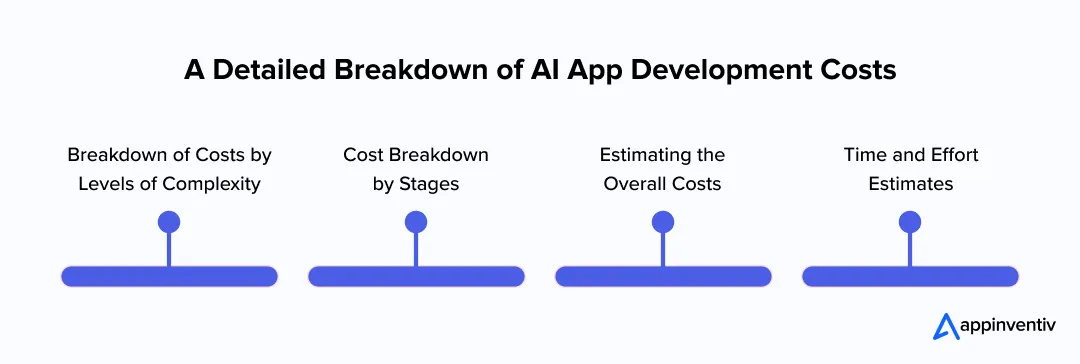
Breakdown of Costs by Levels of Complexity
The artificial intelligence development cost estimation actually depends on the complexity of the application. The features count, the level of automation, and the algorithms are all factors that affect the final figure.
| Complexity Level | Estimated Cost (USD) |
|---|---|
| Basic AI Apps | $50,000 – $75,000 |
| Mid-Level AI Apps | $100,000 – $200,000 |
| Enterprise AI Solutions | $250,000 – $500,000+ |
Cost Breakdown by Stages
The creation of an AI-based system is not a homogeneous investment. The overall cost of AI development will depend on how the budget is distributed between various phases, from the original planning phase to the long-term optimization and updates. The stages make unique contributions to the project’s quality and performance in the end.
Planning (10–15%)
This step prepares the background. It entails identifying the project’s aims, evaluating available information, and evaluating which AI models or frameworks would best suit the project. These activities will include feasibility analysis, technical consultations, and early prototype planning. Specific goals at such an early stage will prevent the need to make expensive changes in the future.
Estimated Cost: ₹12,00,000 – ₹24,00,000 (around $15,000 – $30,000)
Design (15–20%)
It is here that the app starts to emerge. The teams develop UX/UI layouts, app wireframes, and data flow diagrams, which illustrate how the user and the algorithm will interrelate. In the case of AI-driven systems, design is not just about looks; it also involves simplifying complex insights so they can be easily understood.
Estimated Cost: ₹16,00,000 – ₹32,00,000 ($20,000 – $40,000)
Development (40–50%)
This stage is the most resource-consuming and is a significant contributor to the custom AI development cost. It has data preprocessing, model training, backend integration, and front-end implementation. The learning pipelines are developed by developers, trained on real data, and linked to APIs to automate or provide analytics. They are tested in terms of scalability, speed, and security.
Estimated Cost: ₹80,00,000 – ₹2,00,00,000 ($100,000 – $250,000)
Launch (5–10%)
The launch stage is dedicated to deployment, i.e, configuration of servers, establishment of cloud infrastructure, and ensuring that the system works well in real-life scenarios. Such a step can also include launching beta releases, user onboarding, and configuring the AI to monitor the performance.
Estimated Cost: ₹8,00,000 – ₹20,00,000 ($10,000 – $25,000)
Maintenance & Updates (10–15%)
Once the product has been made live, it is necessary to update models, monitor results, and add new features regularly. Constant maintenance incurs a significant cost and also ensures that the AI is up to date with the shifting trends in data, compliance, and user demands. This recurring support is included in the artificial intelligence cost.
Estimated Cost: ₹12,00,000 – ₹32,00,000 ($15,000 – $40,000)
Estimating the Overall Costs
To obtain the total investment, one may use a simple approach and include the following formula:
Total Cost = (Hourly rate of the Developer x development hours) + cost of data preparation + design charges + maintenance costs.
This provides companies with a good understanding of the cost of AI development, which they can use to make useful budget allocations with project specifications not confirmed.
Time and Effort Estimates
Here is the time and effort required to build an AI app:
- Simple AI Application: This typically requires 3 to 4 months.
- Mid-Level AI Applications: 5-8 months.
- Enterprise AI Solutions: 8 to 12+ months, based on the complexity of models and the level of data.
The actual timelines vary based on the team’s scale, the integration’s demands, and the duration of data preparation and validation. More formal systems and larger systems that are highly automated or predictive learning require more work and technical organization.
Receive an accurate cost evaluation from our experts and initiate your journey towards automation and intelligence
Factors Affecting the AI Development Cost
Various factors affect the overall custom AI development pricing, and learning them assists companies in making their budgets realistic. Any of the factors can dramatically alter the overall investment of an AI project. Here are some of those:
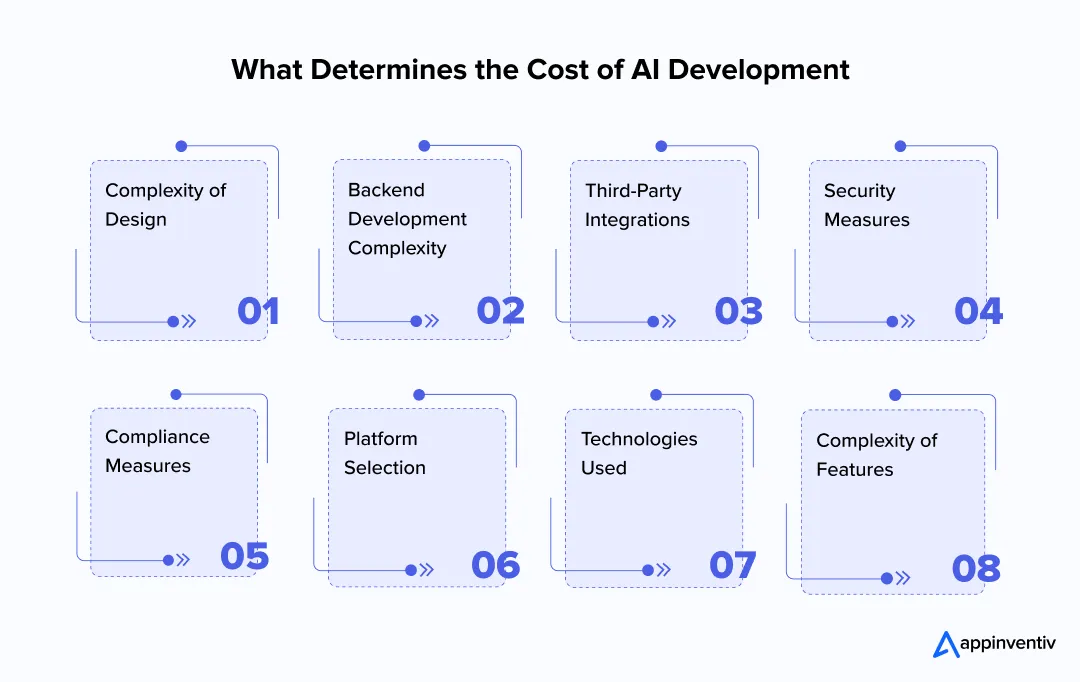
Complexity of Design
The AI application design is not just graphics but consists of user flow, dashboards, and data visualization that make the app easy to understand and implement. Advanced or interactive designs cannot be achieved in a single iteration; they need prototyping and thorough usability testing.
As an illustration, adding visual analysis or live feedback monitors can add to the effort in the development. The above has a direct effect on the cost of implementing AI with a refined, user-friendly interface requiring funding and expertise.
Backend Development Complexity
The backend powers AI functionality, including servers, databases, and APIs. The systems should be scalable, fault-tolerant, and capable of updating AI models on a regular basis. All this adds up a lot to the custom AI development cost. where specialized engineers must be used to guarantee reliability, speed, and performance with heavy workloads.
Third-Party Integrations
The AI applications are commonly based on the use of third-party services like payment gateways, GPS, cloud APIs, or social media integration. Every single integration is accompanied by configuration, testing, and even custom development to provide a smooth interoperability.
The integration of several external services increases the initial development as well as maintenance costs. The integration complexities have an impact on the AI development cost for businesses, and this is because smooth connectivity is essential to providing full functionality.
Security Measures
The solutions of AI often work with sensitive user data, and this is why security is crucial. The use of encryption, strong authentication, access control, and monitoring systems will add complexity to the development.
Enterprise AI applications that deal with financial, medical, or personally identifiable information are particularly critical and require high-standard security. Such factors directly influence AI development costs because security systems provide high-level security, preventing expensive breaches and regulatory violations.
Compliance Measures
Compliance with regulations like GDPR, HIPAA, or other industry-specific regulations increases the time and resource demand. Adherence includes audit, good documentation, process modification, and, in some cases, other technical measures.
Non-compliance with such requirements may result in penalties or legal action, so adherence is a crucial component of planning. The effort is reflected in the artificial intelligence development cost, especially when it is regulated in industries.
Platform Selection
The creation of products based on one platform or multiple platforms has a strong influence on prices. IOS, Android, web, or hybrid deployment needs different code practices, testing, and maintenance. Multi-platform applications require additional resources to operate smoothly across devices and operating systems.
The cost of developing an AI solution is affected by strategic platform decisions made at the planning stage, as unnecessary platform complexity can increase development time and maintenance costs in the long run.
Technologies Used
The complexity and the costs of the project depend on the selection of AI frameworks, libraries, cloud-based infrastructure, and the technologies they support. Sophisticated technologies like natural language processing, computer vision, or deep learning demand expert knowledge, extended development time, and optimized infrastructure.
These aspects are included in the AI development cost breakdown because the choice of technology directly correlates with scalability, performance, and support provision.
Complexity of Features
AI applications may range from a simple predictive model to an autonomous decision-making model. The more sophisticated the functions are, such as real-time analytics, recommendation engines, or automated optimization, the more development effort is required.
Long testing, model training, and combinations of several AI elements make the process more expensive and costly. These complexities associated with features dictate the total AI development cost, and hence, proper feature scoping is essential for proper budgeting.

What’s Really Behind AI App Development Costs
Although the core may be fully developed, it may have hidden costs that can significantly impact the overall AI development cost estimation. It is very important to properly calculate them so that your budget matches reality and that you will not strain unexpectedly, because you did not account for them properly.
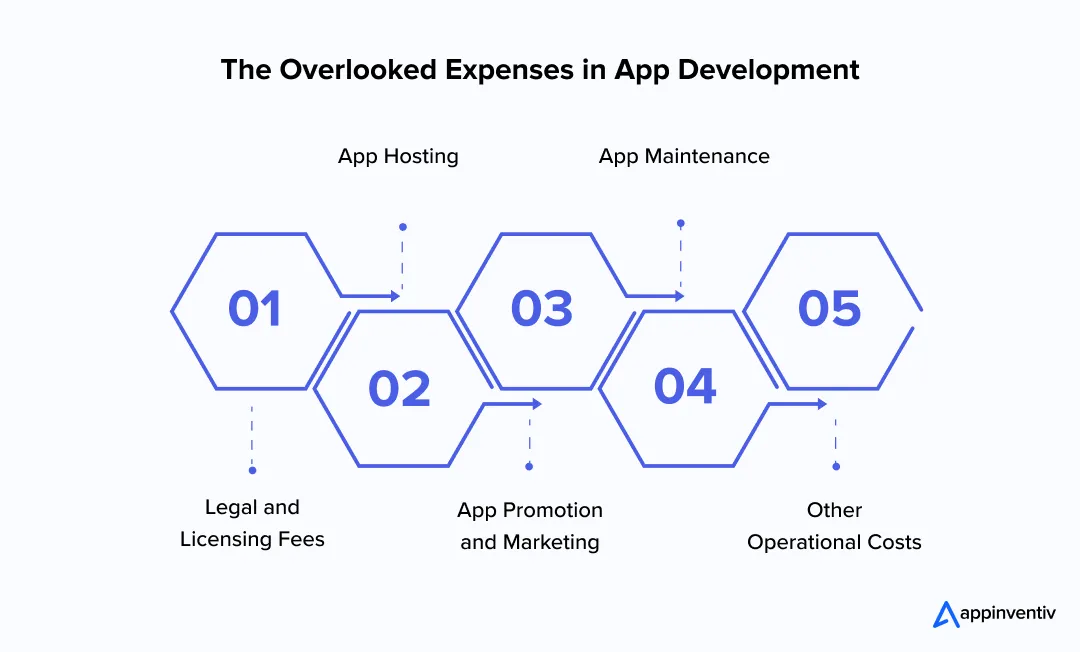
App Maintenance
Maintaining an AI application is an ongoing process that extends way beyond patching bugs. To maintain the effectiveness of the system, teams need to track model performance, retrain algorithms on new data, refine workflows, and update functions. Maintenance is also involved in repairing compatibility problems and security patches.
All these operations contribute to the long-term operational investment and are among the main variables in the AI development pricing model. This is a critical phase that businesses usually underestimate, but it is essential in the long-term sustainability of business performance, user satisfaction, and payback.
App Hosting
Applications of AI are generally intensive infrastructure that would support massive data, intensive computing, and real-time analytics. The common requirements include cloud servers and scalable storage, or even machine specifications that support GPU. Hosting costs may vary depending on usage and performance requirements.
This is why hosting is a significant factor in AI development cost estimation. Insufficient planning may result in the overpayment of resources that will not be utilized or performance issues under high traffic conditions.
App Promotion and Marketing
Regardless of the sophistication of the AI solution, it requires visibility to adopt. Some of the promotion involves social media campaigns, targeted advertising, app store optimization, content marketing, and even events/webinars. Through marketing, the app will be made accessible to the target audience and gain traction in a highly competitive market.
Failure to do so may reduce the uptake of users, and therefore, this is a critical factor when considering the AI development cost. Proper promotion is an investment strategy that adds value to the general value of the AI product.
Legal and Licensing Fees
The AI-based solution often relies on third-party software, APIs, or data, and requires a license or subscription. There are also legal expenses incurred in protecting intellectual property, complying with regulations, or in relation to contracts with partners and clients. Any attempt to avoid these expenses may result in penalties, wasted time, or prosecution.
These non-obvious expenses are a crucial component of the artificial intelligence development cost, ensuring that the AI system is legally functional and will not impose any unexpected fees.
Other Operational Costs
Other operational costs may affect the entire budget besides development, maintenance, and hosting. This can involve team training, subscription services, scaling infrastructure to meet the needs of growing user numbers, support contracts, or monitoring tools.
Even seemingly minor recurrent expenses add up over time and affect the cost of AI development, requiring one to plan accordingly.
Also Read: Intelligent App Development Cost Estimation Guide
Ways to Optimize AI App Development Costs
Although developing an AI application may be costly, it is possible to implement some proven methods to minimize spending without losing quality or functionality. Careful planning and prioritization enable companies to control the cost of developing artificial intelligence and enhance ROI.
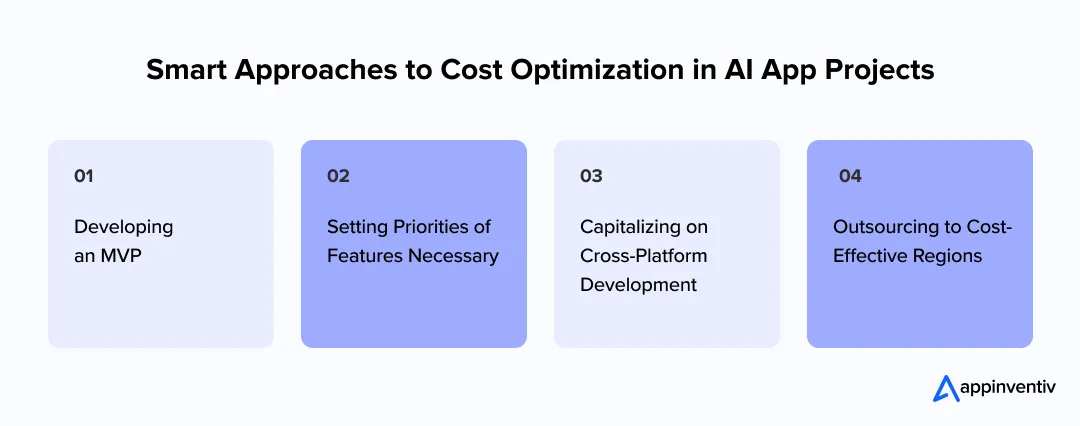
Developing an MVP
The Minimum Viable Product (MVP) is a technique that lets you test your AI idea first and decide whether to invest further. By prioritizing core functionalities, you can test market reaction, collect user feedback, and progressively improve features. This incremental method reduces the initial development cost of key AI features but provides the product with the opportunity to develop further based on actual user feedback.
Setting Priorities of Features Necessary
Not every feature is equally valuable to the business. The initial identification and implementation of minimal functionalities can help reduce costs and speed up the development. Additional or niche features may be added as the app grows. This method ensures that resources are directed efficiently, directly impacting how much AI costs, while avoiding unnecessary complexity.
Capitalizing on Cross-Platform Development
Developing a multimedia platform application using frameworks like Flutter or React Native can significantly save time and resources needed to create an app. A single shared codebase can deliver faster than multiple codebases and ensures that all functionality is aligned, unlike when a separate codebase is used for each platform, such as iOS, Android, and the web. It is a viable way to optimize the custom AI development cost without compromising on performance and UX.
Outsourcing to Cost-Effective Regions
Outsourcing app development to regions with lower labor costs, while maintaining quality standards, can reduce overall AI development costs for businesses. The high-tech talent and competitive prices in these countries enable companies to find AI, machine learning, and data engineering expertise at a fraction of the local cost. The strategy offers scalability so that teams can be expanded or contracted very fast as needed by the project.
Understanding the Artificial Intelligence Development Process: Key Stages
Developing an AI application must be done systematically to ensure it is useful, functional, and capable of delivering value. By following distinct steps, the development process becomes more organized, costs can be controlled, and errors can be minimized during deployment. Key stages include:

Define Objectives and Scope: Clearly define what your AI app will address, describe the intended users, specify the results to be achieved, and define the key performance indicators.
Data Preparation and Data Collection: Collect appropriate data, clean and preprocess it, and ensure it is representative and sufficient to train AI models.
Choose AI Models and Algorithms: Select suitable machine learning or deep learning models based on the app’s functionality and complexity requirements.
Design the User Interface: Create user-friendly, intuitive interfaces that are easy to interact with for AI functions and outputs.
Combine Backend and AI Systems: Link the AI models with the backend and APIs and databases, and other systems required to operate smoothly.
Testing and Validation: Fully verify the application and assess its accuracy, performance, and reliability, including edge and real-world cases.
Deployment and Monitoring: Deploy the application to the target system, run it, and refine the models or features as necessary.
With our structured development process, you gain transparency, scalability, and consistent delivery across all stages
Monetization Strategies for Your AI App
The revenue model of an AI app is important for predicting profitability, calculating ROI, and defining the app’s long-term strategy. The selected model is based on the target market, nature of AI functionality, and anticipated usage. The right app monetization strategy can maximize revenue while preserving high user engagement. Common strategies include:

Subscription-Based Model
Users are charged on a recurring basis, every month, quarterly, or annually to access the capabilities of the AI app, updates, or power tools. It is a model that gives predictable income and keeps people interested in the platform, which is why it is appropriate with SaaS or enterprise-oriented AI solutions.
Freemium Model
The AI app offers basic features that are free, while premium services and analytics can be fully accessed under paid plans. This will enable customers to experience what the app will be like without making any financial commitment, which will motivate people to adopt and promote upselling.
Pay-Per-Use / Transactions Model
The revenue is earned on a per-use basis, e.g., API calls, AI-driven suggestions, or real-time analytics. This model is best suited for use where there is a wide range in the use of the product by users or businesses, and promotes fair prices based on usage.
Licensing Model
The AI solution can be sold to companies or third parties to be incorporated into their own products or processes. Proprietary algorithms or specialized AI technologies can be a dependable revenue stream with licensing.
Advertising Model
By showing targeted ads in the app, the company gains revenue and increases engagement and click-through rates through improved ad relevance provided by AI. The strategy is effective in consumer-oriented applications where end-user information can be used to personalize advertising without intrusion into privacy.
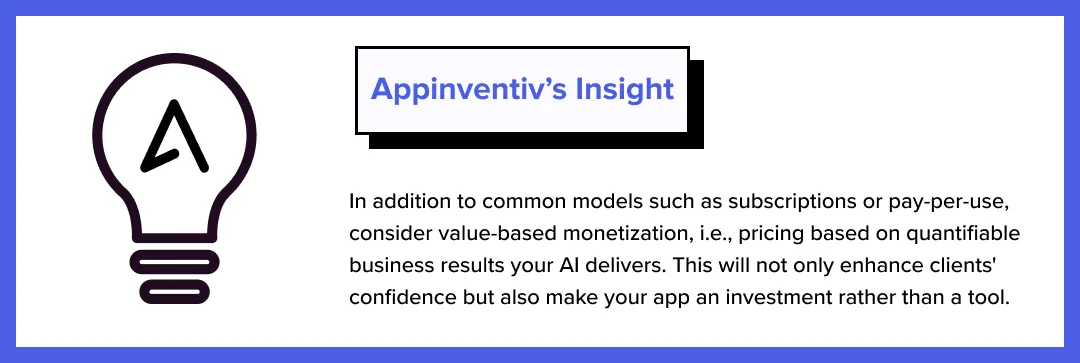
Build Intelligent, User-Friendly AI Apps Effortlessly With Appinventiv
Figuring out the cost to build an AI app is the first big thing for any business that wants to use artificial intelligence smartly. Here at Appinventiv, we handle the entire process—from start to finish—helping companies design, develop, and launch smart apps tailored to their exact needs. Through our comprehensive AI development services, we use advanced technologies including machine learning, natural language processing, and predictive analytics to transform complicated work into smooth, automated systems that deliver better business results.
A great example of this is the work we did with Americana Group on how they managed their last-mile deliveries. The issue was simple: slow deliveries were hurting their food brands, and it was tough to maintain consistency across so many locations.

We built a real-time command system, powered by language models, that instantly processes operational data, auto-assigns tasks, and helps managers make better decisions across the entire network. The results were significant: last-mile delivery efficiency doubled, and the accuracy of on-ground operations increased fourfold.
We’ve used a similar approach on projects for MyExec, MUDRA, Vyrb, and Flynas, consistently delivering insights you can actually use and making operations more efficient. Our skill in AI solutions even got us named a Leader in AI Product Engineering & Digital Transformation by The Economic Times.
If you’re ready to really see what artificial intelligence can do, and you want to take your ideas and turn them into intelligent apps that bring real change, connect with us today. We build highly impactful AI solutions that accelerate innovation, simplify processes, and deliver tangible, positive business outcomes.
FAQs
Q. How much does it cost to build an AI system?
A. Depending on various factors like the complexity of the AI solution required, the nature of the AI model needed, required data infrastructure, and the team, the cost to construct an AI system may range widely. As a business, an AI system may cost between $50,000 and $500,000 million or more, depending on the scope and needs of the business.
The simpler AI solutions with basic features can cost less, whereas the more advanced solutions with advanced features such as deep learning or an NLP system can be very expensive, which impacts the overall cost of AI development.
Also Read: AI Agent Development Cost: Factors & Pricing Explained
Q. What factors influence the cost of AI development for businesses?
A. The primary factors that affect the price of AI development are:
- Project Scope –The bigger and more sophisticated the AI solution, the more costly it will be.
- Data Requirements – Data quality might be an important portion of the cost of data collection, cleaning, and preparation.
- Artificial Intelligence Experience- Skilled AI developers, data scientists, and machine learning engineers are associated with increased costs.
- Technology Stack- The selection of tools, platforms, and cloud services may have implications for costs.
- Integration & Maintenance – The overall cost of an AI solution is increased by ongoing updates, testing, and integration into existing systems.
Q. What are the different types of AI solutions that can impact the cost?
A. AI solutions can be of several types, each of which has its cost implications:
- Machine Learning (ML) – Less expensive and simpler systems of classification are more likely to be predictive and require well-curated data to drive the cost of AI development.
- Natural Language Processing (NLP) – Complex NLP systems (chatbots and language translation models) are more expensive, as they require a large amount of data and advanced algorithms.
- Computer Vision – AI image and video recognition solutions are generally resource-demanding, and because of this, they are more costly.
- Robotic Process Automation (RPA) – Repetitive task automation can prove to be cheaper to the business, but custom solutions are also expensive.
- Reinforcement Learning – This AI solution is frequently applied to sophisticated systems such as autonomous vehicles or robotics, and it also happens to be the costliest.
Q. What is the typical timeline for developing an AI solution tailored to a business?
A. The process of creating an AI solution can take a long time, depending on the complexity and available resources. Simple AI models may require a few weeks to a few months to design, whereas more complicated solutions, such as deep learning models or AI systems that require large datasets and integration into the existing systems, may take 6 months to 1 year or longer.
Testing, model fine-tuning, and deployment strategies also affect development time and directly impact AI development costs.
Q. In what ways does Appinventiv assist businesses in managing AI development costs?
A. Appinventiv assists companies to cope with or manage the AI development cost by:
- Offering scalable AI solutions – We focus on building AI systems that scale with your business, so you only pay for what you need.
- Streamlining development schedules – As a seasoned team, we will work more efficiently to develop AI solutions within a shorter time, which will reduce the cost of AI solution.
- Leveraging pre-built frameworks – We use ready-made AI models and frameworks to reduce development costs and remain flexible.
- AI cost-efficient strategy – Our specialists collaborate to create a clear roadmap to AI implementation that will reduce unnecessary expenses and achieve maximum value.


- In just 2 mins you will get a response
- Your idea is 100% protected by our Non Disclosure Agreement.
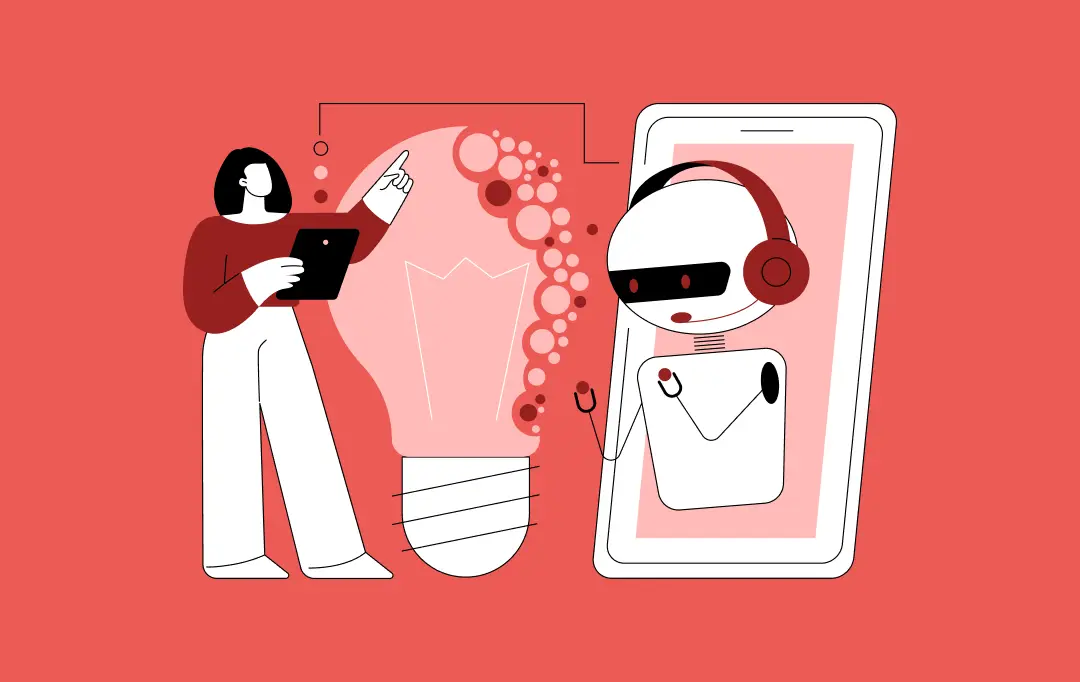
How Much Does It Cost to Build an AI App in Dubai?
Key takeaways: AI app costs in Dubai typically range from AED 80,000 for simple builds to AED 800,000+ for enterprise systems. Dubai is past AI experimentation, and not investing now means catching up later at higher cost. The real budget is driven by data, integrations, architecture, and compliance, not just app features. Hidden costs like…
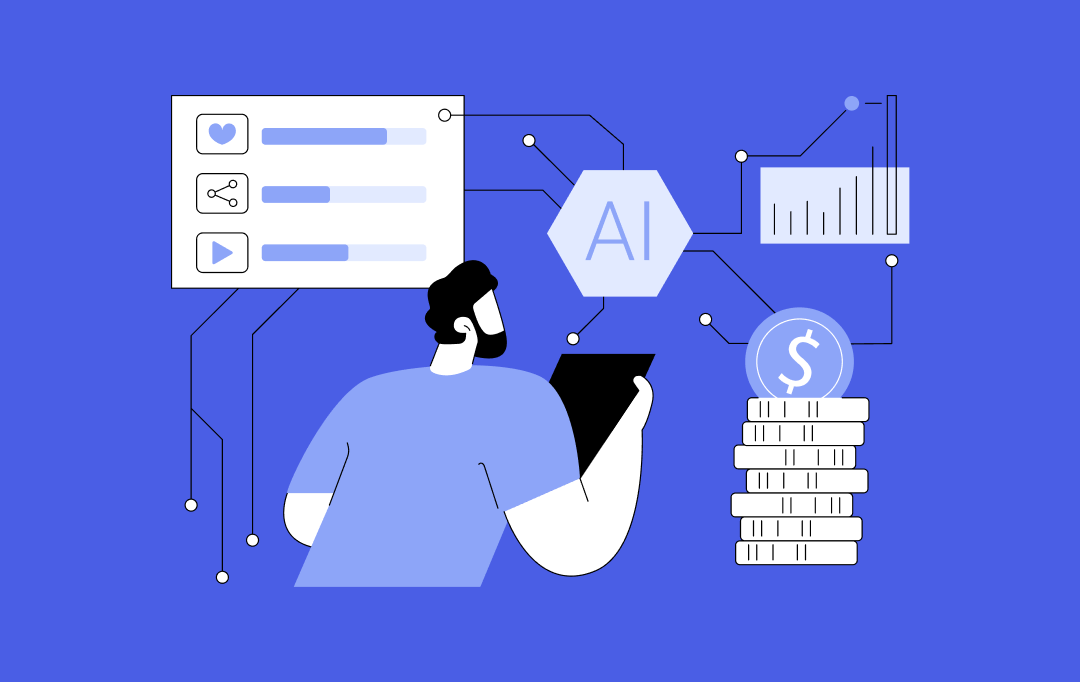
How AI Tokenization is Enabling Secure and Transparent Asset Ownership in 2026
By 2026, AI tokenization has moved beyond early-stage experiments and pilot projects. Tokenizing real-world assets has become a serious commercial strategy for financial institutions, supply chain operators and technology-driven enterprises. A 2025 report by the World Economic Forum in collaboration with Accenture highlights tokenization as a key mechanism for value exchange in modern financial markets.…

13 Ways Generative AI is Transforming the Hospitality Industry
Key takeaways: The most mature applications of Generative AI for hospitality are in guest service, revenue management, marketing, and operations automation. Real value comes from integrating generative AI into hospitality operations and existing PMS, CRS, CRM, and POS systems, rather than using stand-alone tools. Successful programs treat Generative AI in hospitality as a product, incorporating…
